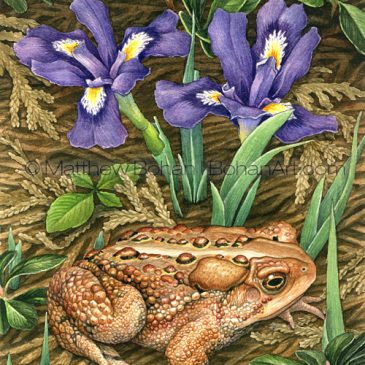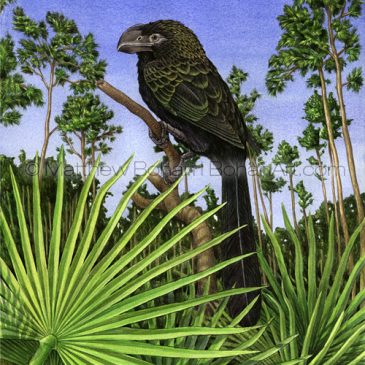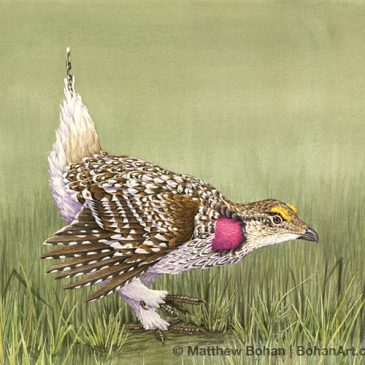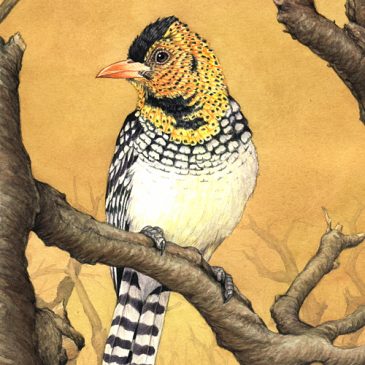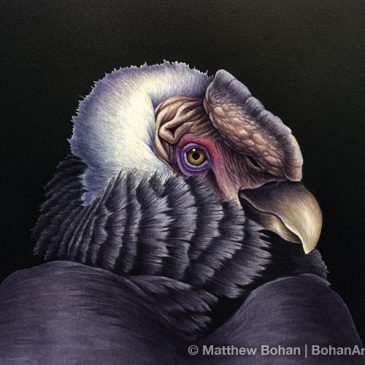Throwback Thursday– Female Anhinga Transparent Watercolor
This painting was from 1999-2000. Anhingas are interesting birds. At times they are really attractive, but occasionally they seem rather awkward. This female anhinga has some molting feathers on her head. They have a few nicknames including Water Turkeys and Snake-birds. When hunting … Continued
Throwback Thursday – American Toad & Dwarf Lake Iris (Transparent Watercolor)
Michigan has great diversity in its animals and plants. Some are very common and can be found in many states, while others are incredibly rare. The American Toad is a common species. I’ve seen them my whole life. Their fantastic … Continued
Visit the Updated Website!
Well, it was long overdue. I finally got around to a major reworking of the website. I’m happy to say that there are literally hundreds of images posted, and the whole site is mobile device friendly. Come on by and browse through loads of animal art, medical … Continued
Throwback Thursday– Smooth-billed Ani Transparent Watercolor
Here is another “Blast from the Past.” I finished this painting in 2002. I especially enjoyed painting the Everglades-looking scrubby vegetation and the bronzy colors of the Ani. Although the Smooth-billed Ani looks a bit like a grackle, they are … Continued
Throwback Thursday– Sharp-tailed Grouse Transparent Watercolor
I was trying to think of a good bird for Thanksgiving. Unfortunately, I don’t have any turkeys and this Sharp-tailed Grouse is one of the few gamebirds I’ve done. Looks like I have a hole in the portfolio to fill. … Continued
Throwback Thursday–D’Arnaud’s Barbet
I was revisiting some old artwork while creating my new website.There are about 170 watercolor paintings to go through. Some I almost forgot, but not this one. It was always a favorite because of the unusual background. D’Arnaud’s barbets are … Continued
Throwback Thursday– Maui Amakihi Transparent Watercolor
Old? Yes, this one is from 1998. This painting shows a pair of Maui ‘Amakihi. I got the reference photos of these energetic little honeycreepers at Hosmer’s Grove in Haleakala National Park on the island of Maui. The birds were … Continued
Horned Larks in Snow (Transparent Watercolor 9.25 x 24 in)
I really love these birds. There is just something hilarious about a cute little bird with those tiny devil horns! They had been begging to be painted for a long time. Finally they made it to the top of the list. … Continued
Throwback Thursday—Andean Condor (8×10 in Transparent Watercolor)
I’m in the process of revamping my website and thought I’d add some older paintings to the blog while I was at it. To my memory, this Andean Condor was painted in ’96. I loved painting this bird. It had a regal … Continued
2015 Halloween Hats
Well, that time of year has arrived again. Every year the kids and I start negotiations on what they should be for Halloween. I suppose most parents have this discussion in the aisle at Target, but in our house it … Continued


